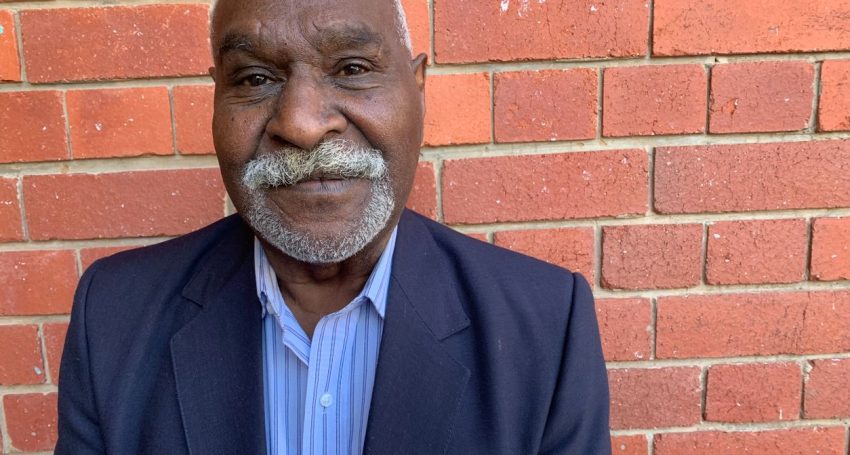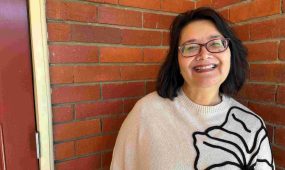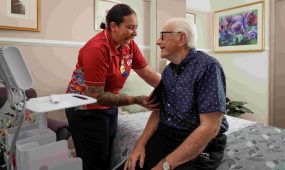"The first Easter I remember"
Reflections
“As a community, after the Easter Day service we celebrated the resurrection of the Lord Jesus with a big kai kai (feast). People from all over the Torres Strait Islands and Papua New Guinea (which was then still administered by Australia) came via sailing canoes rather than by motor boats, bringing seafood, taro, sweet potato, casava, sago and other traditional foods. We then had traditional dancing with men wearing headdresses made of emu feathers and women wearing grass skirts,” says Uncle Milton Walit from NATSIAC and The Parish of Laidley

The first Easter I remember was in 1969 and I was in Year 5. I was very involved in church. I even served as an altar boy at All Souls’ and St Bartholomew’s Church on Thursday Island when it was still a Church of England parish. I remember it because I vividly recall the four-day reenactment of Jesus’ suffering, death and resurrection.
It started off with Maundy Thursday when we gathered to do the washing of the feet. In the Last Supper reenactment, I remember the part where the person playing Jesus blessed the bread and wine and also said that, “The one who has dipped his hand into the bowl with me will betray me (Matthew 26.23).” We then removed the items from the sanctuary area, including the altar, from the church, and pushed the pews to the side before commencing a period of reflection and “keeping watch”.
On Good Friday we did devotion services, which included the kissing of the wooden cross. Key parts of the church were covered in purple cloth. On the Friday night, I witnessed the reenactment of the crucifixion. It felt very real — making the stories they told us in Sunday School and that we read in the Bible real. We were told to sit up and stay awake, so we did. We leant on one another, taking turns to sleep on each other’s shoulders as we sat keeping vigil.
My uncle was chosen by Torres Strait Islander priests to act in the role of Jesus during the reenactment because he was light skinned. However, some of the local lay elders spoke up saying that it didn’t matter what colour skin the person had who played Jesus — that even someone with fuzzy hair, a big beard and dark skin should be able to play him.
I remember looking up and seeing Jesus — played by my uncle — dying in the moonlight. It was so amazing — I remember looking up with the other boys and thinking that he was really like Jesus. The Spirit touched us — and we all started crying when his last breath was taken. At that exact moment a cloud went over the moon. The elders then comforted us with kind words.
Advertisement
On Holy Saturday we assisted the Mothers Union members return the sanctuary items to the church and rearrange the pews. We then helped decorate the church with coconut palm leaves, which we cut down with machetes. We had to climb the trees to get to the palm leaves. Some of us cut into the tree trunk to create footholds, holding the machete between our teeth as we climbed. While some of us climbed with a rope attached to our wrists and once reaching the top we lowered the rope so a machete could be tied to it and lifted for cutting the palms. We also decorated the church with a full-grown banana tree that was potted in a large flour tin and stabilised with large rocks, and by placing sugarcane on the church walls. This was all in preparation for Sunday. We were very closely supervised by the Mothers Union members to ensure we did things properly. We had to learn to work well together as a tribal team, but we were too scared to complain about the aunties watching us so closely.
After that we had server practice for the Sunday services, so we knew what order to process in, before being allowed to return to the college where we lived on Thursday Island. The college, which was for Aboriginal and Torres Strait Islander students, was run by the then Aboriginal and Island Affairs Department as part of its assimilationist agenda. The college was formerly an army hospital before becoming a hospital for leprosy patients. The buildings were still the same. We were told not to go to a building at the bottom of the college near the jetty because it was previously used as a crematorium for patients who died of leprosy — their bodies had been cremated and their ashes released into the sea. But we boys would go down there anyway.
Advertisement
On Easter Day we woke up early and had a 7am breakfast. Some of us then jumped on the Department’s truck so we could get to the church, while some of us chose to walk. The boys who were serving robed up for the service. We wore red robes with a white girdle. Because I was young, I carried a sanctuary candle, which I lit for the reading of the Gospel.
As a community, after the Easter Day service we celebrated the resurrection of the Lord Jesus with a big kai kai (feast). People from all over the Torres Strait Islands and Papua New Guinea (which was then still administered by Australia) came via sailing canoes rather than by motor boats, bringing seafood, taro, sweet potato, casava, sago and other traditional foods. We then had traditional dancing with men wearing headdresses made of emu feathers and women wearing grass skirts.
Holy Week and Easter Day are among the fondest memories of my childhood. The reenactment opened my eyes to Christianity, making me feel as though I was in the Palestine of Jesus’ time and witnessing what really happened according to the Bible, from the Last Supper to the Resurrection.





